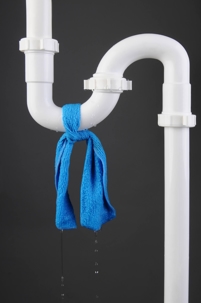As homeowners, we take our plumbing systems for granted and assume they will work efficiently without any issues. However, like any other home system, plumbing has a lifespan and will eventually wear out.
However, most plumbing issues are not easily detectable until it's too late. This article will discuss the signs that indicate it's time to replace your plumbing to prevent costly damages and ensure your home remains safe and healthy.
Pipe Material and Age
Your pipes' lifespan and effectiveness will depend on the type of material they are made from and how old they are. Pipes can erode or deteriorate over time due to aging and wear and tear. Low-grade pipe materials, like galvanized steel, might corrode more quickly and require replacement more frequently. Low-grade pipes can result in issues, including leaks, obstructions, and other plumbing-related problems.
Also, pipes installed in places where the water is hard (rich in minerals) may age more quickly. Assess the plumbing in your home to find out what kind of piping material utilized and how old the pipes are. Some widely used materials are copper, brass, cast iron, and polyvinyl chloride (PVC). Each have different lifespans dependent on the material and setup process.
Low Water Pressure
A disengaged entrance valve or congested pipes may be the source of low pressure. Also, issues with low water pressure can result from numerous factors like corrosion, mineral accumulation, and plugged pipes.
Corrosion happens when oxidation causes the interior walls of pipes to erode and clog. Mineral accumulation occurs when minerals like calcium, magnesium, and iron congregate on the interior walls of pipes and obstruct water movement.
Dirt, debris, and other objects that can obstruct water flow and cause clogged pipes. Additionally, your plumbing can make gurgle or rattle noises because of an air-tight pipe obstruction.
Call a professional to replace your plumbing if the water pressure is lower than the standard in your area. You can also benefit from enhanced water pressure and effective water flow with a new plumbing system.
Water Discoloration
Discolored water highlights that the internal pipe walls have deteriorated, and your pipes' integrity has become compromised. Due to this deterioration, your family's health may be at risk from rust, algae, and other bacteria that can develop inside the pipes.
Older pipes that have been in contact with water for a long period frequently develop rust, which can turn the water a shade of yellow, orange, or red. With time, rust can deteriorate and cause holes in the pipe, which can further contaminate the water.
If the water in your home has a blue or green tinge, there may be copper or brass in the plumbing system. Algae in the line may also be a source of green water. Black water can indicate potentially toxic growth in the pipes. Pinkish water can signify the presence of a harmless organism inside the pipes, which you must still remove since it can obstruct water flow.
Extensive Leak Damage
Replace leaky pipes as soon as possible because of the potential long-term harm they may cause. When water leaks from a pipe, it may harm the nearby walls or ceilings, which may result in stains or even the growth of mold. Brown marks on ceilings and walls indicate water damage from a leaking pipe. Call a qualified plumber as soon as you see any wall stains so they can locate the leak's origin.
Additionally, a leaky pipe can break or flood if a qualified professional does not discover the leak in time, which can result in much greater harm. Repair any nearby water damage after you fix the leak to stop further problems.
Contact us at PlumbRite for plumbing renovations, maintenance, and other services.
Additional Service Areas
Omaha, NE
La Vista, NE
Bellevue, NE


